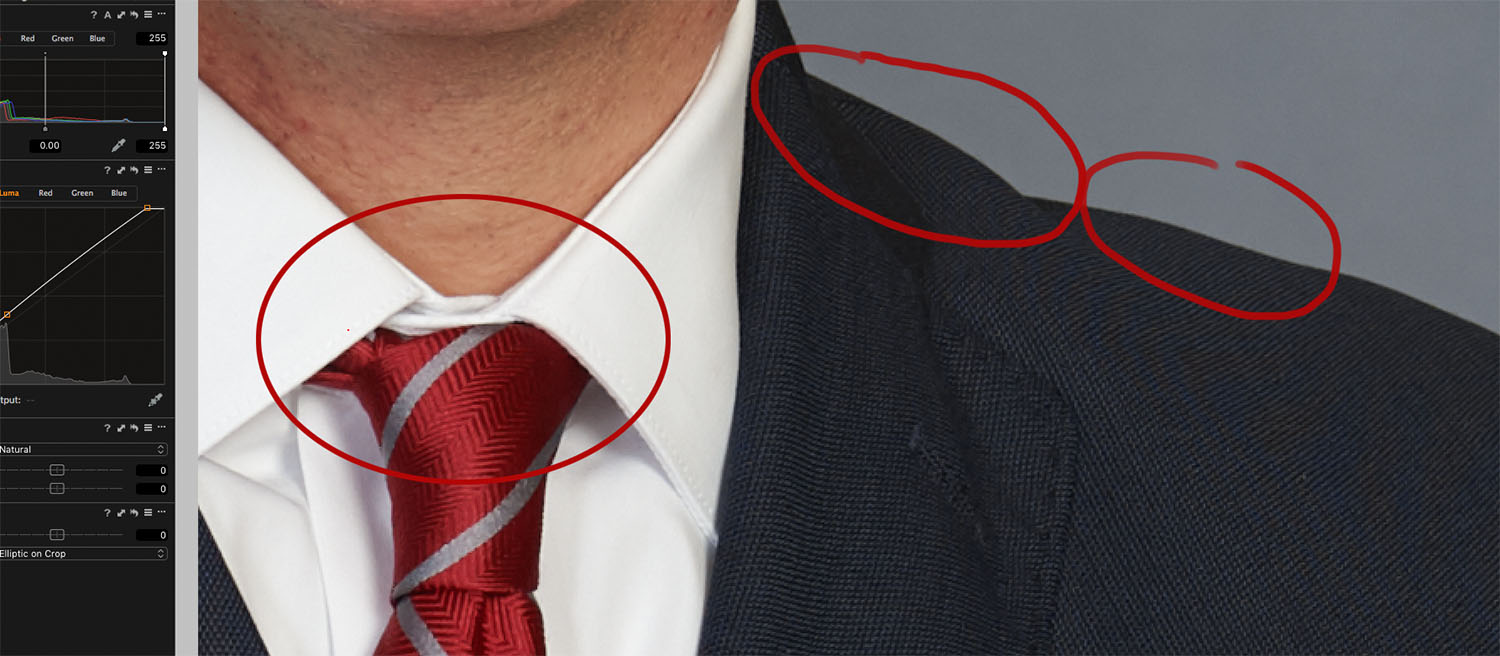Head shot portrait retouching
What’s in a word?
I’ll begin this article with a few words about the word retouching. We understand that this is the word everyone uses and understands, so we use it, too.
Reluctantly.
Frankly, most of the connotations about that word are negative. At best it implies fakery. At worst it suggests repair work on a flawed subject. We don’t want our work to suggest either of those! We are much more comfortable using the term polishing, which suggests making something good even better. So we’ll continue to honor the term which is used by most of the world but, between you and us, polishing comes closer to what we do.
These days, just about every head shot portrait image we release to our clients has been looked at carefully by an experienced digital technician. 1
You don’t have to specify or explicitly request the basics of retouching – you can count on that being done as part of our service. It’s built into our pricing.
All of our corporate head shot portraits are of real people, not professional models. We don’t take a fashion or beauty approach to retouching. We want real people to look like real people… just a better version of reality.
For us, successful retouching elicits a “that’s a really good picture of me” response, not an “OMG, look what they had to do to me” response. If the subject becomes aware of retouching we feel we have taken it too far. We retouch carefully and thoroughly, but strive to be subtle. Honestly, the post production on a portrait often involves more time than the photography does.
What’s included automatically?
So then… what do we do in this “polishing” process? The following list isn’t exhaustive, but it indicates the common things our technicians instinctively look for.
- Minimize hair flyaways (we try not to go too far with this – we don’t want to result in “helmet hair” – but the really independent strands go away)
- Blend and subdue shine on forehead, tip of nose, cheekbones
- Increase skin tone uniformity (minimize pore texture, blemishes, blend and suppress ruddiness)
- Remove or subdue highlights on glasses
- Whiten and lighten teeth
- Brighten and emphasize eyes
- Lighten dark circles under eyes
- “Tighten” neckties if necessary (closing the gap that frequently appears between the top of the tie knot and the top of the shirt collar)
- Smooth bumps and irregularities on a suit jacket shoulder line
- Remove noticeable and distracting spots, flecks, and stray hairs which may have fallen on dark clothing
- Trim bits of hair which are, shall we say, not where you might prefer hair to be (noses and ears, I’m looking at you)
What do we NOT do?
As with the previous list, this isn’t exhaustive but gives a good sense of what isn’t done to a business head shot. (The first two items are presented with humor. I list them because of the number of times we get the request!)
- Remove 10 years and or 20 pounds (in spite of frequent requests to do so)
- Add hair
- Remove prominent and permanent marks and moles (at least not without asking – some subjects prefer they be eliminated, others consider them essential landmarks and would be annoyed if we removed them)
- Remove “5 o’clock shadow” beard stubble. It’s almost impossible to make this look natural and realistic
- Eliminate shirt wrinkles
More, by special request
As mentioned above, moles or other distinctive features can be removed or downplayed by request. Same with scars. To some extent we’re able to equalize eyes that are of different sizes (you might be surprised by how many people have small variances between the left and right eye).
Subjects are always encouraged to look at images on a laptop at intervals as we go. We listen to their reactions (which are sometimes hilarious). We make note of each person’s individual area of sensitivity and try to address that in post production.
Why do we bother?
Why do we spend as much time in post production as we do behind the camera?
That’s simple. Because it’s what a professional should be expected to do. FayFoto cultivates long term client relationships. Our contacts hear about it if the subjects they send our way are happy with the outcome. Satisfied clients are inclined to call us again and, over time, a partnership develops.
If you are…
- a marketing/communications professional or
- a practice development specialist in the greater Boston area or
- if you are an individual in need of a solid professional head shot
…then we hope you will get in touch with FayFoto Boston and see just how good you, or the professionals you represent, can look with a little polish!
- That’s because of how fast and easy it has become for portrait subjects to select a favorite – often right at the time of the sitting. Refer to our “How it Works” post for more details about this. ↩︎

